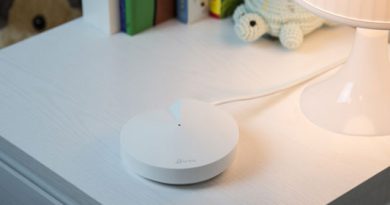Tired of Slow Internet At Home? Here’s the Fix!
There are a lot of different things that might be causing your Internet connection to seem sluggish. The issue may be with your modem or router, the Wi-Fi signal, the intensity of the signal with your cable connection, devices on your network that are using up all of your available bandwidth, or even a sluggish DNS server. The hacks in this guide will assist you in determining what the root of the slow internet at home issue is. Read on.
How to Fix Slow Internet at Home?
1. Check the Problem with Multiple Websites
If your internet speed test shows that your connection is sluggish, you should try connecting to numerous websites and using multiple devices in your house. When, If your internet connection is poor, your speed test will indicate that your connection is slow. If the sluggishness is only experienced on a single website, the issue is most likely caused by the website itself, and not by your internet connection.
Locating the root of the slow internet at home issue is the first step in finding a solution to it. Is the slowness just experienced on one of your computers, or does it affect all of your devices? If it’s only one computer, then you already know where the answer most likely is.
If the sluggishness is experienced on numerous devices, such as different computers or both your computer and your phone, it is almost probably the result of a problem with the network, and you will need to check your router to fix it.
2. Verify and Compare the Internet Speed
Before you go through a lot of troubleshooting on your end, it’s worth doing a speed test using a website like speedtest.net to evaluate how well it’s truly functioning. Before you begin the test, you should make sure that any downloads, uploads, streaming from Netflix, or other intensive internet activities have been stopped. This will guarantee that there is as little influence on the findings as possible.
Contrast the results of the speed test with the speed that you anticipate receiving from the Internet connection that you are paying for. If you are unaware of this information, there is a significant probability that it is included on the bill for your Internet connection or the website of your Internet service provider.
Why is That?
Since certain Internet service providers may prioritize speed testing and because they may have servers located very near to you, the results of speed tests may sometimes seem to be rather high. Because you often pay for “up to” a specific speed, and because you don’t always receive the exact speed that you pay for, it is usual for the speed of your connection to seem to be a little lower than expected. Speeds may be slower at busier periods of the day, such as when everyone in your area is using the Internet connection, compared to less busy times, such as when many people are asleep or at work.
It is possible that you simply subscribe to a sluggish internet plan; if this is the case, you will also need to contact your service provider to pay additional fees to change your service.
If, on the other hand, you are paying for a certain connection speed but continually get speed test results that are far slower than that, it is necessary to move on to the troubleshooting methods that are listed below. Possibly, it might help you fix the slow internet at home issue.
3. Reboot the Networking Devices
Just like computers, modems and routers may sometimes get stalled in an unfavorable, sluggish, or overcrowded condition. A simple restart of the system should fix the slow internet at home issue. If it’s been a while since you turned off both your network and your modem, you should do it right now.
You may just need to reboot a single device if your modem and router are built into a single unit. On the other hand, there is a significant likelihood that you will need to restart two separate pieces of hardware, namely the modem and the router. to the router through the modem.
To restart them, disconnect each one from the power outlet it is connected to for 10 seconds before reconnecting them. Be patient as it may take a few minutes.
The Bottom Line
With that, we are wrapping up our guide on how to perform slow internet at-home issue. Hope you liked reading this blog.





sgv956